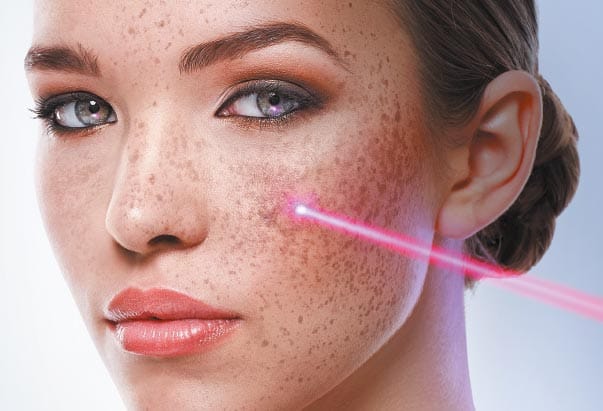Did You Know?
There is currently no governing body that regulates the certification of laser technicians, so the term “certified laser technician” is essentially meaningless. There are provincial governing bodies for many other healthcare practitioners, including doctors, dentists, physiotherapists, kinesiologists and chiropractors. Sadly, the lack of regulation of laser technicians leaves the public vulnerable to negligence or, at the very least, inadequate and uninformed care.
Thankfully, the laser manufacturing industry makes an effort to protect the public where the current laws fall short. Laser manufacturers use self-regulation; that is to say the legitimate manufacturers of Health Canada approved equipment screen potential buyers to ensure that they are qualified healthcare professionals, belong to a recognized provincial governing body and have appropriate levels of training. Liability insurance, standards of codes and ethics, and continuing education credits must be obtained to stay registered year after year. I had to provide the manufacturers of the various lasers I use at the clinic with my credentials in order to purchase their equipment. At HealthPoint we use the finest technology on the market today.
In the US, the FDA is far ahead of us as far as regulation is concerned. No one in the United States can treat someone with laser without a medical background. It is surprising that Canadians, who are so progressive in many areas, have not already legislated this. I have worked with politicians on this matter, and the subject is now in reading, or being considered. If industry regulation is passed into law, the very promising field of laser therapy will flourish. Currently the development of the industry is stifled by unregulated practices that leave clients open to harm without the ability to seek liability damages. For registered healthcare professionals like myself, making a mistake means being held accountable by the governing body that regulates my profession. I can be called before the Board, lose my accreditation and membership, be refused liability insurance and am subject to malpractice litigation.
In addition to the lack of accountability that comes in an unregulated industry, technicians who do not have a medical background are not able to accurately diagnose and treat pain. This can result in harm to the person, or can do nothing at all to help, both of which damage the reputation of the laser industry and of legitimate practitioners. Lack of standardization of care could also stifle the development of cost-effective, non-invasive modalities of healing, such as laser therapy, which may have a real, positive impact on public health and our healthcare system. Recently, I treated a lady who had consulted with a laser clinic about an IT band injury. The iliotibial band is a strong, thick band of fibrous tissue that runs along the outside of the leg. The IT band starts at the hip and runs along the outer thigh and attaches on the outside edge of the shin bone (tibia) just below the knee joint. The band works with the quadriceps (thigh muscles) to provide stability to the outside of the knee joint during movement. It is an injury that commonly plagues runners, which she was. When the “technician” asked her what an IT band was, she quickly moved on. She came to HealthPoint Laser and now runs 10K daily. As for smoking? I have treated at least a half dozen people who have tried laser elsewhere and failed. The HealthPoint Laser result? All quit!
So what should you look for when considering laser therapy? First of all, know in whom you’re entrusting your care. Does the website have an “about us” or “who we are” page? All of us at HealthPoint Laser Clinic are health professionals. Laser is a medical procedure, and your practitioner should have the appropriate credentials. Ask for their credentials. If they are not forthright, think twice. Until the government steps in to protect the public by vetting these clinics for you, it is still caveat emptor.
No Pain, No Gain? Actually It’s The Opposite
There is a huge difference in so-called lasers, including those on the market that give the legitimate industry a bad name. Here’s one key differentiator: as far as cold laser therapy goes, there should be no pain involved. None. If there is any discomfort at all, the technology is between 15 and 20 years old. Some clinics use devices that shouldn’t technically be classified as lasers due to the fact that most of the stimulation comes from an electrical charge. The power output of this “laser” is 5 mW (milliwatts). The laser I use is 200 mW, 40 times more powerful, with no pain at all. If you have to hold a grounding pad in your hand during the treatment, you are dealing with one of these older devices. The problem with these systems (besides the fact that they hurt!) is that there is no standardized dosage of energy. The “technician” will give you the highest dose he/she sees fit and then dial it down in power if the intensity is too much; in other words, if you’re in pain. This makes the dosage vary between individuals, as everyone has a different threshold for pain tolerance. The lasers I use are state-of-the-art; they are expensive, yes, but I know that every time I turn my laser on, I am administering to the patient precisely the dosage of energy I intend. I have learned volumes through empirical research from the more than 600 smokers I have treated. I’m a science guy; I continually do research into different applications of the laser. I have modified the treatment from observation and data. The treatment protocol you receive at HealthPoint Laser Clinic is unique. Quite simply, I get everyone to quit smoking. The only way you fail is if you decide you want to smoke, and you ignore my frequent follow up phone calls. Otherwise, you will quit. I have honed this to a very straightforward process. Everyone quits, regardless of their situation.
Watch Out For Hidden Charges
At Healthpoint Cosmetic + Laser Clinic, there is only one charge for the quit smoking program. Often companies will have hidden charges that you discover only after you have arrived for your appointment. They will also give you free follow up treatments—unless you smoke. The quit smoking process is just that—a process. Sometimes people encounter unexpected stress or put themselves in challenging situations, like being in the company of other smokers early in the process, especially if alcohol is involved. These companies will offer a lower up front price and, if you smoke, typically charge you another $100 – $150 to be treated again. This concept is flawed and leads to failure. You already feel bad enough that you slipped up. In my experience, many people will simply not go back for another treatment. And if they do, and slip up a second time?They leave, forever thinking that laser didn’t work, damaging the reputation of the industry. And don’t believe anyone who claims that these slips never happen. Humans are imperfect creatures, and there are circumstances beyond anyone’s control. The important thing is to be committed to your goal, and learn from your mistakes. If you learn something that helps you make the proper decision the next time, it’s called a lesson. At HealthPoint Laser, we are committed to your success, and will help you quit no matter what curves life throws at you. Hidden costs for this program? Zero. Becoming a non-smoker for good? Priceless.





